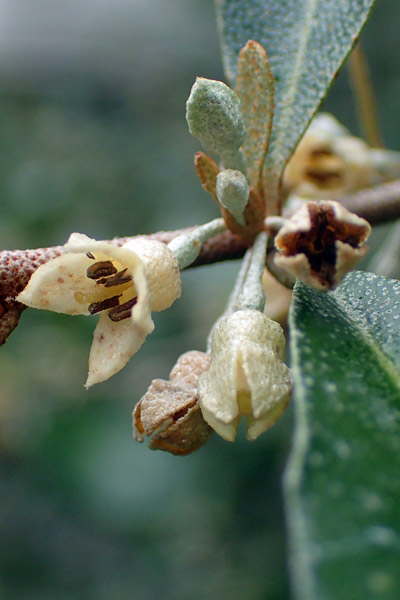Elaeagnus oldhamii
The Oldham elaeagnus is an evergreen shrub or small tree commonly found in Taiwan at altitudes below 2,500 meters in low- to mid-altitude forests or flatlands. Its most distinctive morphological feature is the dense silver-white scales covering its branches and leaves, with the densest concentration on the underside of the leaves, giving the entire tree a unique silvery-gray hue.
The leaves of the Oldham elaeagnus are elliptical or lanceolate in shape, green on the upper surface, and completely covered with silvery-white scales on the lower surface. When exposed to sunlight, they shimmer with a soft luster, making them highly visually distinctive. Its slender and versatile branches are easy to prune and shape, making it an excellent material for high-end bonsai art. It is well-known in Taiwan's bonsai community, with its intriguing twisted bark texture and branches that appear dusted with silver powder, making it a rare gem among deciduous bonsai and highly favored by bonsai enthusiasts.
Its mature fruit is a berry, rich in juice, brightly colored, and effective in attracting birds to feed. While birds peck at the fruit, they also help spread the seeds of the tree, expanding its distribution range and maintaining the balance of the ecosystem. In addition to being used for garden landscaping, it is also used as a medicinal herb in Taiwanese folk medicine, though other plants of the same genus are often used in combination.
In early literature the Oldham elaeagnus was classified as a species endemic to Taiwan, but in fact, it is also distributed in Fujian and Guangdong provinces in southeastern China. It is a common coastal and riverbank shrub in Taiwan, possessing high drought tolerance, salt tolerance, and wind resistance. It thrives in both gravelly and sandy soils and has been selected repeatedly as a tree species for landscaping in poor soil conditions. In the museum, it is planted on the circular hill in the Central Lowland Area of the Botanical Garden, near the side gate leading to the administrative center, and is used as a hedge.

